Teacher experience
Tools are adapted to the context of use, with a clean and self-explanatory interface. You will never waste time figuring out how your teaching tool works. The essentials are always just one click away.
Activities and assignments
Activities are at the heart of instructional design at Leemons. Currently, Leemons supports two basic types of activities: tasks and tests (with images or mapping).
When an activity is assigned to a classroom, custom group or individual, this activity becomes an assignment, allowing teachers to define the type of evaluation, deadlines, and more.
So far, Leemons supports four types of evaluation in the assignment configuration:
- Gradable (the score will be taken into account for the final grade, comments are allowed).
- Non-gradable with a score (a score is required but will not be taken into account for the final grade, comments are allowed).
- Feedback only (only comments are given back)
- Not evaluable (no score or feedback is given)
Create and assign Tasks
Tasks in Leemons can range from a review task of reading a text or watching a video without any kind of evaluation, to the elaboration of a final master's thesis that requires the submission of attached files.
Tasks also have a new brand functionality called “multi-subject tasks”, with this new feature it is possible to create tasks related with more than one subject and attach specific curriculum to them from each subject. The best part is that Leemons allows subject teachers to evaluate these tasks separately and give different scores related to each subject.
How to create a task or “multi-subject task” on Leemons PlatformTests overview
The Leemons test system is based on the creation of question banks that can then be reused to create specific tests. At the moment we support single-answer questions with or without images and a special type of test that we call map test.
Question banks (QBanks)
Question banks allow the creation of small databases of questions on a specific topics or areas of knowledge that can then be used in tests.
How to create Question BanksCreate and assign test
Once the question banks have been created, setting up and assigning a test is extremely simple.
How to create and assign testsOnGoing activities and evaluation process
The "Ongoing Activities" section allows the teacher to manage the assignments in progress and to consult in real time the pace of the submissions
Main OnGoing
On the main ongoing activities page, it is possible to review all the assignments that have been made and are still open.
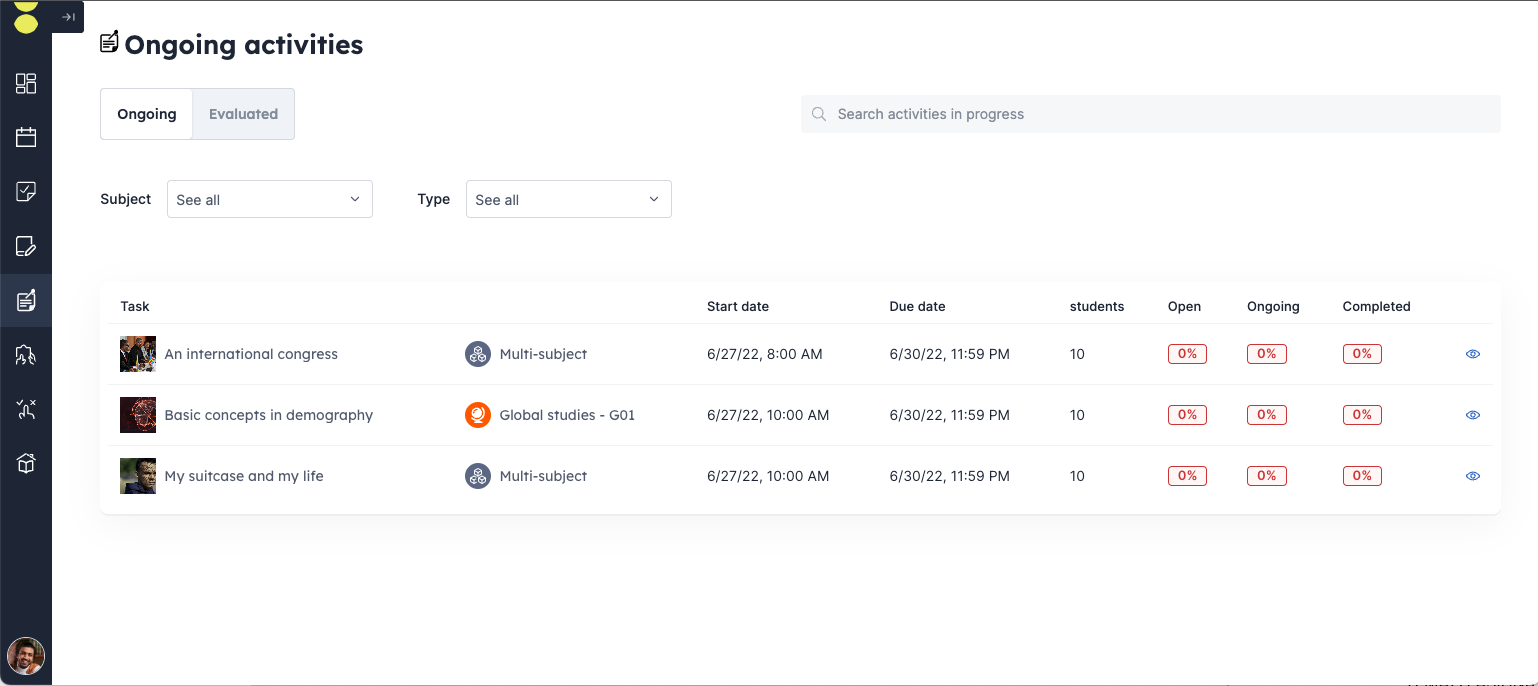
Detail OnGoing
On the details page of the activities in progress, the detail of a specific assignment can be seen, with the students that were included. If the activity requires scoring or feedback, the system allows direct access to the evaluation page.
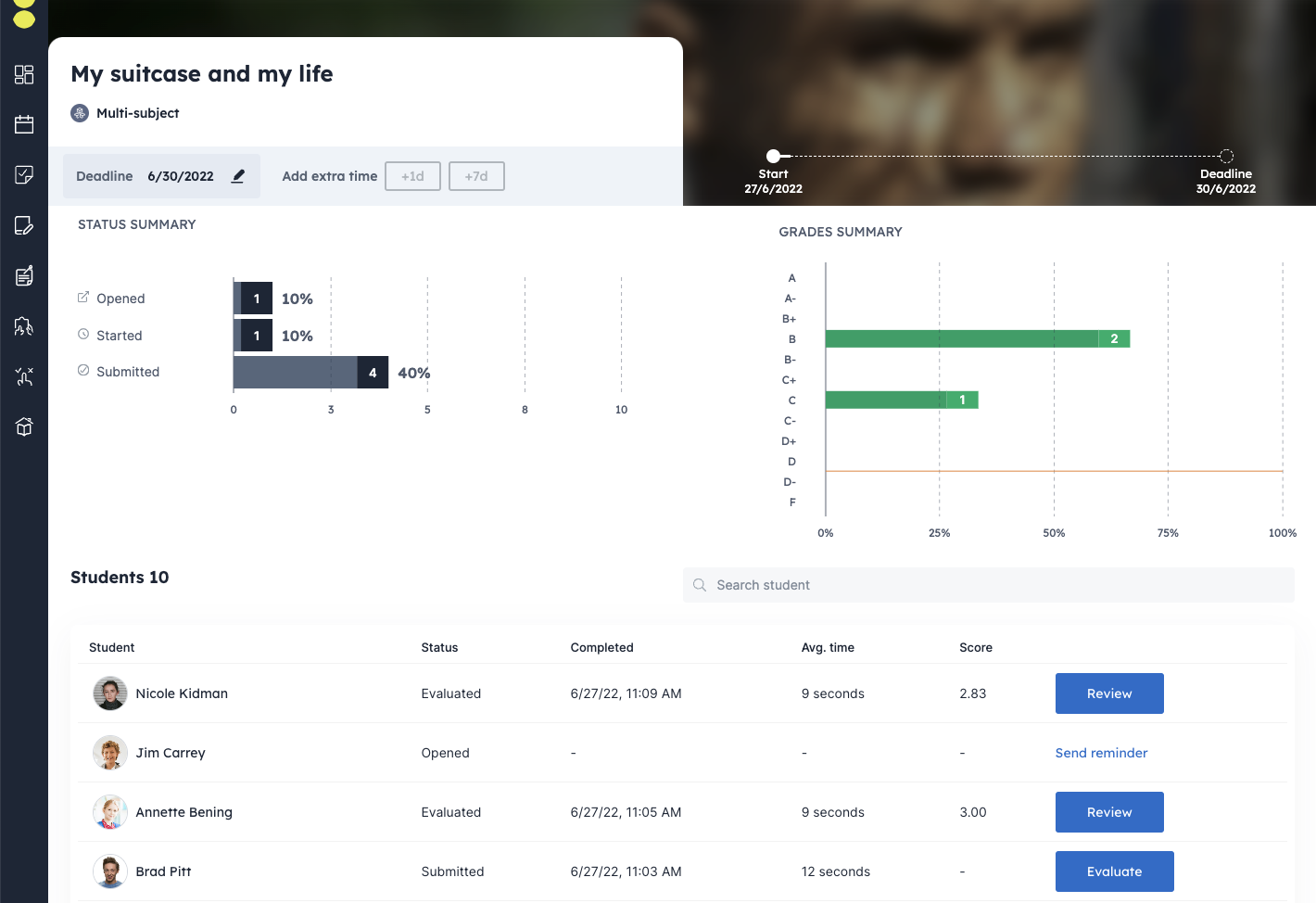 OnGoing Detail with Evaluate, review and send reminder actions
OnGoing Detail with Evaluate, review and send reminder actions
Close assignment
If the activity has no due date or if late submission (after the due date) is allowed, the teacher can close the activity at any time and students will no longer be able to do the activity or make submissions.
The teacher can decide to re-open the activity at any time and the students will be able to complete it again.
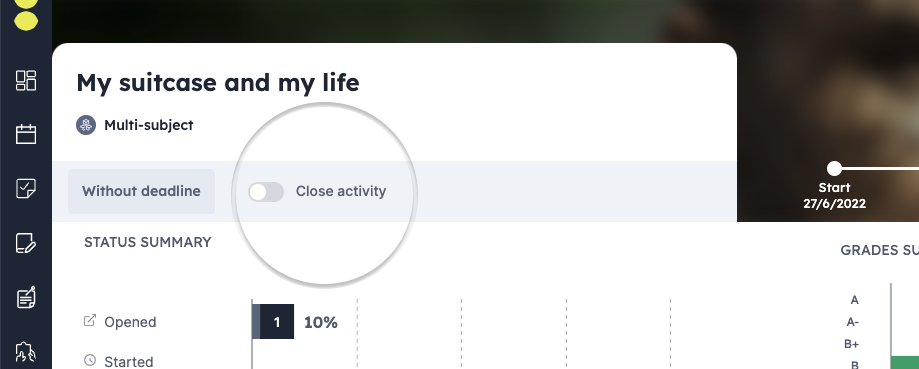 Close Activity switch
Close Activity switch
Archive assignment
Once an activity has reached its due date or has been closed by the teacher, then the activities can be archived. Archived activities will no longer be visible in the list of current activities for the teacher or the students, and will be moved to the historical record.
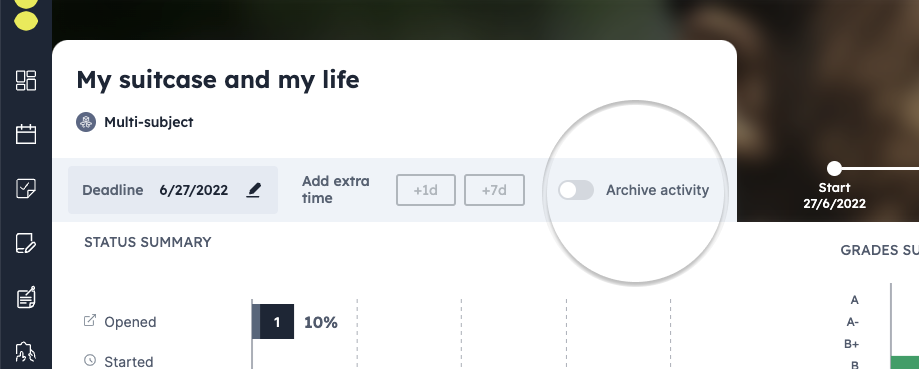 Archive option
Archive option
Evaluation pages
When a student has completed an assignment (with or without delivery), the teacher can evaluate it by including a score (which will be gradable or not depending on the assignment settings) and can also include a comment or feedback.
Scoring
This feature allows you to put a numerical or letter-based score on completed activities or student deliverables.
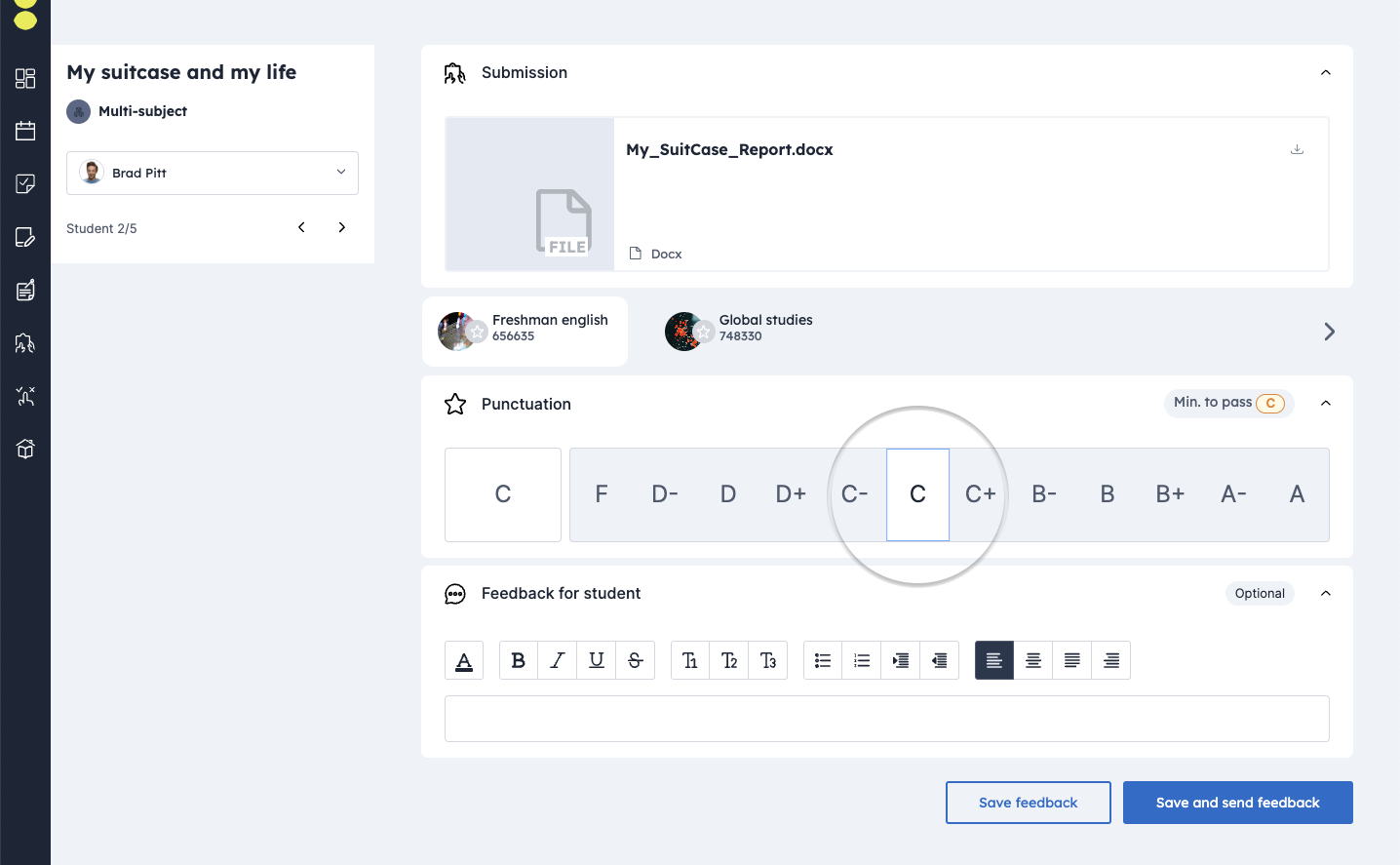 Scoring feature in the evaluation page.
Scoring feature in the evaluation page.
Feedback
Thanks to the feedback module, the teacher can include comments and advice for the student.
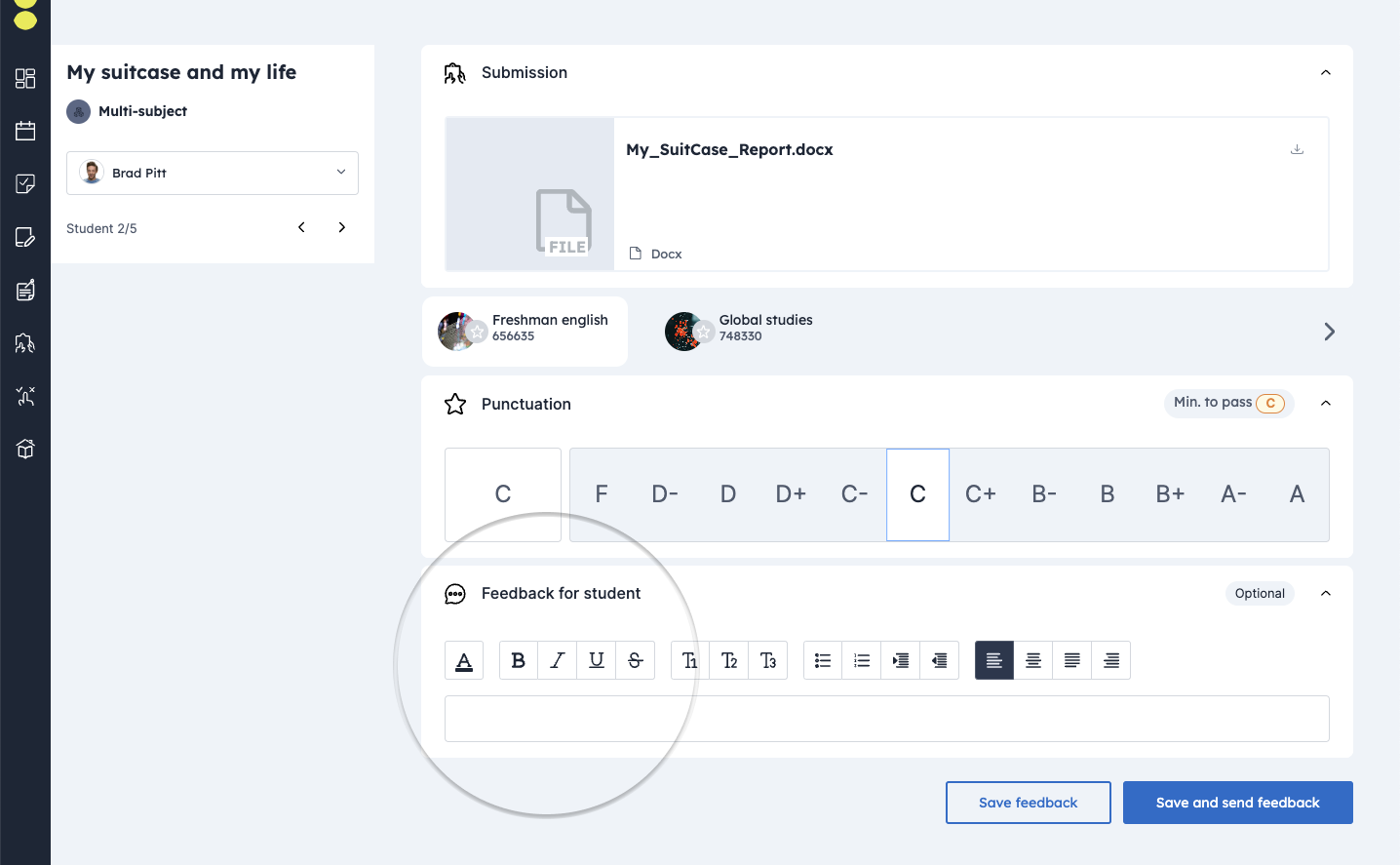 Evaluation feedback message
Evaluation feedback message
Calendar and Kanban support to teaching
Calendar and Kanban help teachers manage communication related to activity assignments.
The system automatically creates events in the calendar and tasks in Kanban, allowing both to keep track of when an activity is due and to monitor its progress through Kanban statuses.
For example, a new assigned activity will appear in the student's Kanban in the "To Do" column, if the student opens it and starts to do it, this card will go to "In Progress", once delivered (and if it needs teacher review) it will go to "To Review" and once evaluated, it will automatically go to "Done" (at which time the student can archive it if desired).
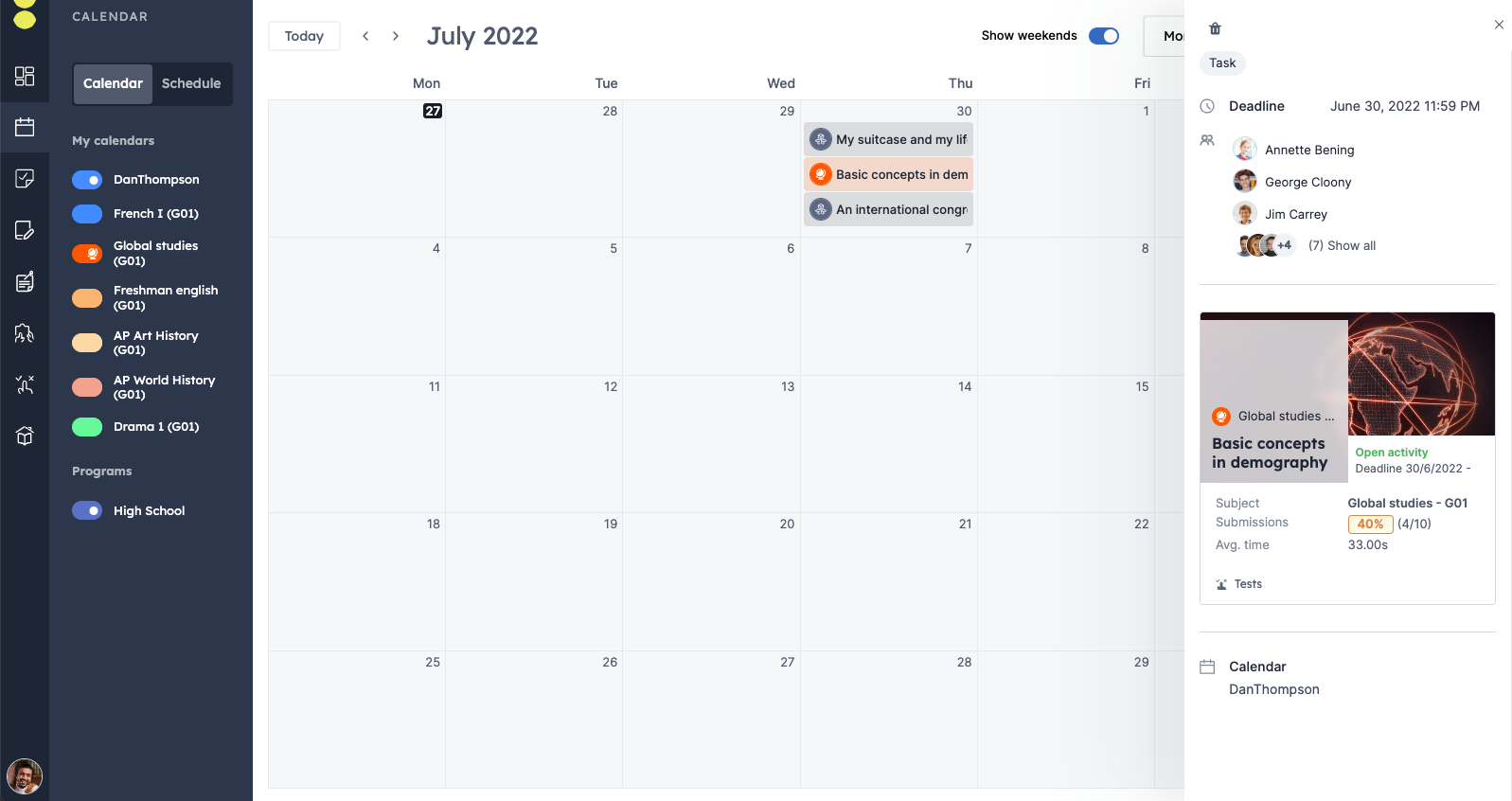 Automatic calendar event, created when you have assigned an activity.
Automatic calendar event, created when you have assigned an activity.
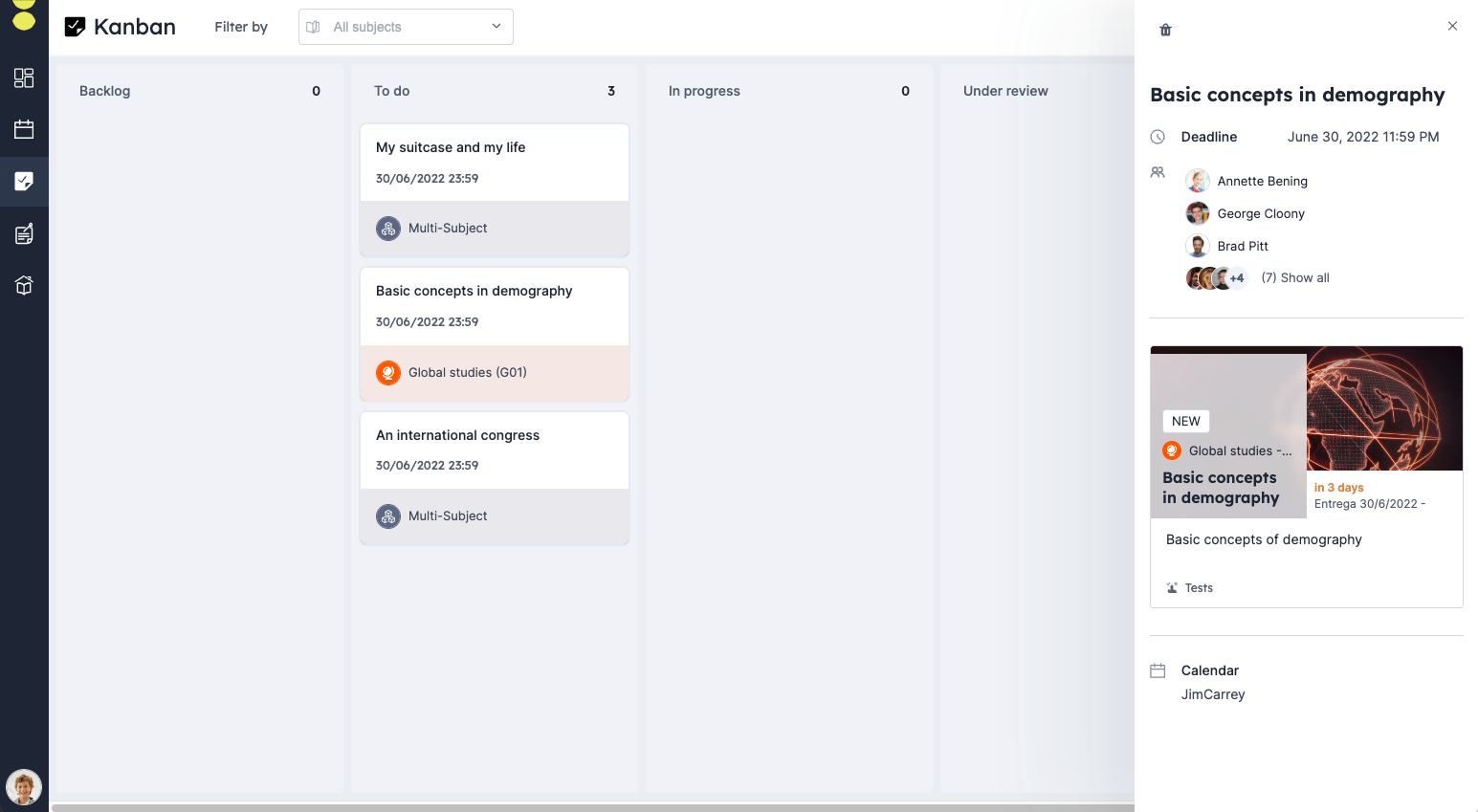 Automatic Kanban task, created when you have assigned an activity.
Automatic Kanban task, created when you have assigned an activity.
Automatic Schedule
Thanks to our intelligent scheduling system, each teachers and students can see their weekly schedule without having to configure anything. Depending on the subjects they teach, they will see their schedule and the breaks defined at the program level.
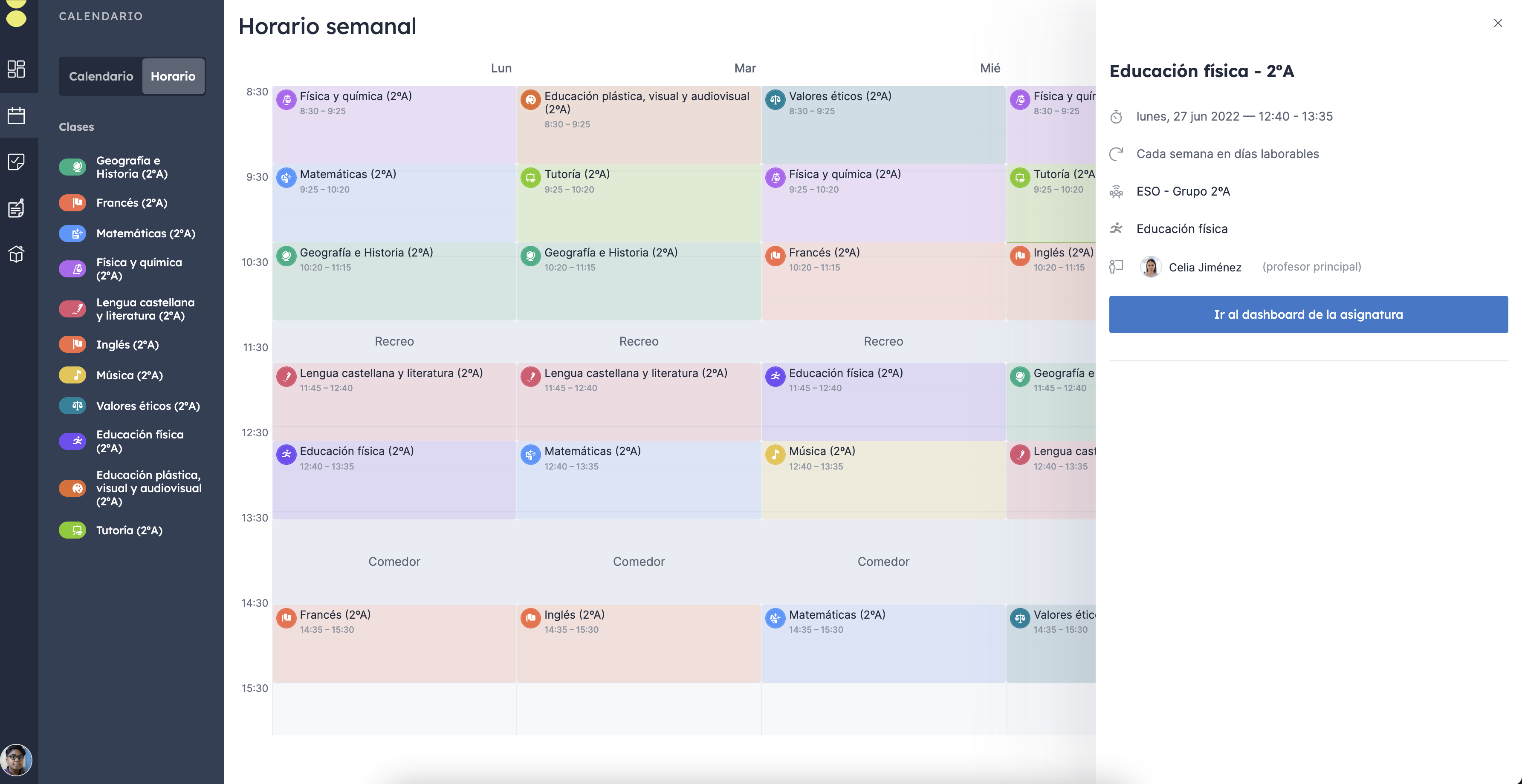 Automatic schedule.
Automatic schedule.
Scores
Our scoring and grading system currently supports the creation of custom evaluation periods by the administrator (such as semesters or quarters), so that teachers can consult lists of scores and students in a personalized way, or using these periods provided by the organization.
From Scores, consultation of the average grades can be obtained for a given period, change scores in real time (only for assignments, since tests have automatic scores), and it is also possible to consult those scores that are not gradable in order to better visualize the student's learning progress.
And finally, it is possible to download the results into a spreadsheet so that customized reports can be created or import these notes into other systems.
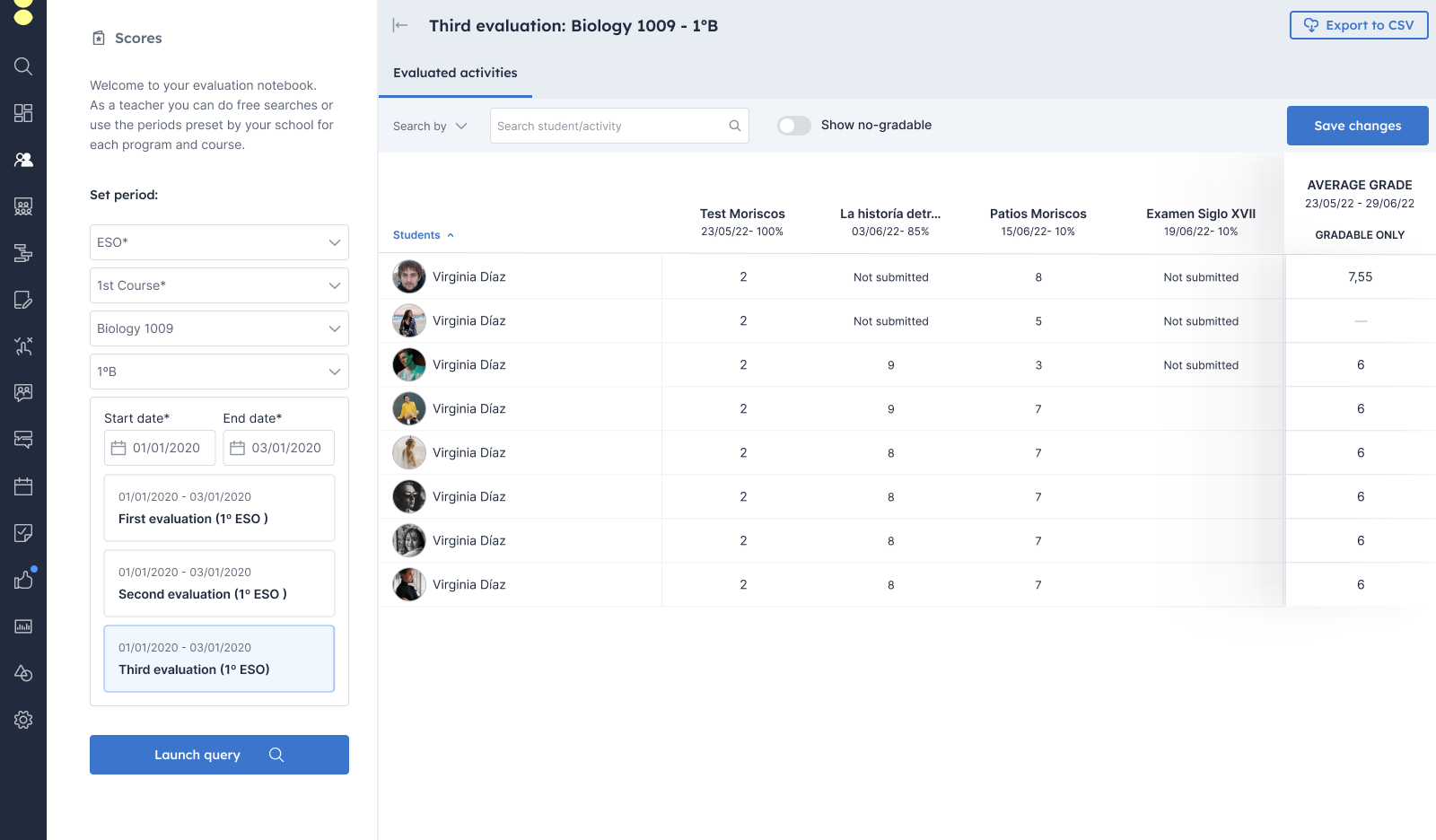 Scores page with evaluation periods and the list of activities and students.
Scores page with evaluation periods and the list of activities and students.